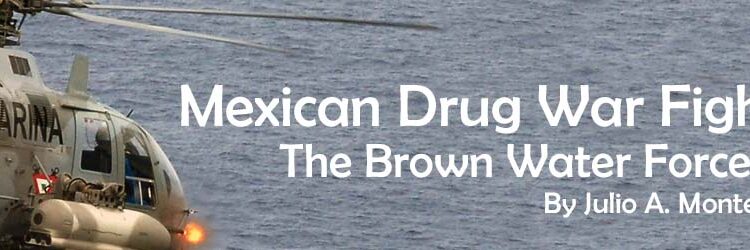By Julio A. Montes
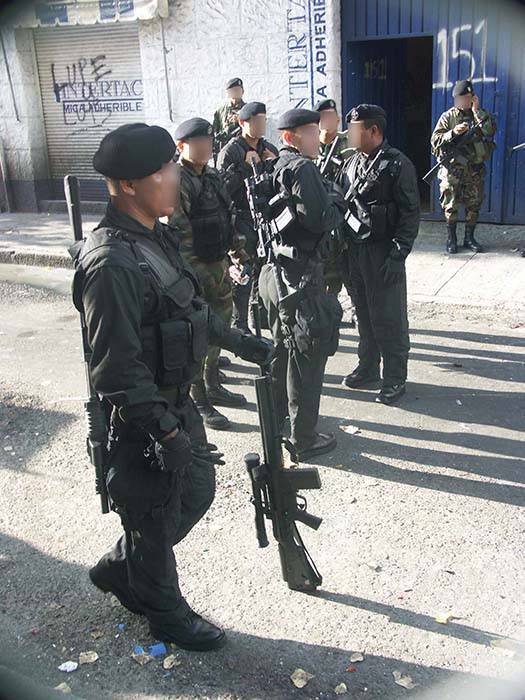
In July 2008, the Mexican navy seized a 33-foot submarine transporting cocaine off its southern coast, some 125 miles off Puerto de Salina Cruz, Oaxaca. A year later, the U.S. Coast Guard and Mexican Navy intercepted another 8 tons of pot off the Baja California coast. According to the USCG, a C-130 Hercules patrol aircraft from Air Station Sacramento, Calif., detected the smugglers about 60 miles west of Isla Cedros. The U.S. Coast Guard dispatched the Cutter Aspen, while the Mexican Navy dispatched a patrol boat, intercepting the 16,588 pounds of marijuana as indicated, with an estimated $15 million value. These are just a couple of the many missions undertaken by the Mexican Naval forces in the drug war. The Mexican Maritime forces have developed close ties with U.S. military and anti-narcotics agencies. Not only the Navy and Marines have received U.S. training, but also receive intelligence on the whereabouts of the enemy.
It was President Felipe Calderon (2006-2012) who gave to the Navy the task of fighting the country’s drug cartels head-on and to impose public order and safety. The Mexican Navy, in particular, responded to the call with great enthusiasm and immediate action; the U.S. assisted in transforming the service into a viable force, providing it with intelligence and training to bolster its capabilities. In the exchange, both military services benefited of new experiences, equipment and training.
Tools of the trade
The Marines are now highly mobile and lightly armed, and they are confronted by well-armed and protected capos. If the need arises, the Marines can call for fire support, mostly provided by either the M1 or the Cazador (Hunter) 60mm mortars. The first one weighs 19.0 kg (41.8 lbs.) and has a range of 1,200 m. The second weighs the same as the M1, but has a range of 1,800 m. The Brandt M-29 provides support in a higher caliber (81mm) and a range of 3,800 m. The Marines have adopted the RPG-7 and RPG-75 anti-tank portable weapons. The RPG-75 is a 68mm model weighing 3.2 kg (15 lbs.), and having a range of 300 m. This RPG-75 is a portable single shot (LAWW-style) anti-tank weapon developed in Czechoslovakia in the 1970s.
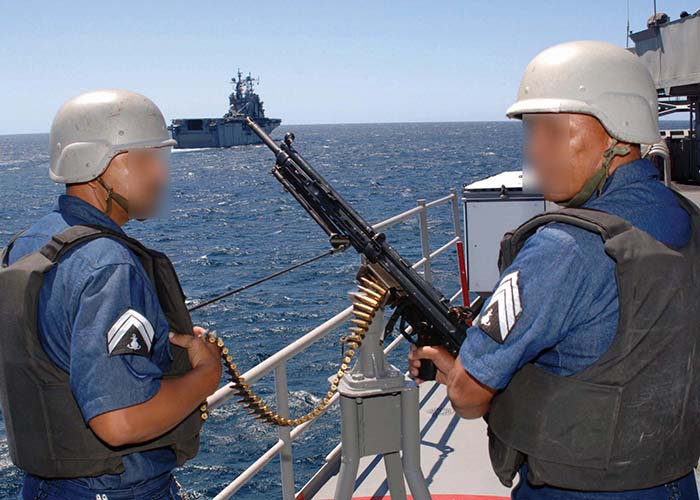
More anti-tank and anti-bunker support comes from Israeli-made B 300 RCL, in 82mm caliber. The weapon weighs between 3.1 and 8.2 kg (6.8 – 18.0 lbs.), having a range of 650 m. Most recently, the Marines have organized two field artillery groups with M-56 Oto Melara howitzers. These are 105mm models with a combat range of 11,270 m. Between the latest materials received figure the PVS-14 NVG and the Sentinel AN/MPQ64 radar.
For point air defense, the Marines use the 9M39 Igla MANPAD. Although single launchers have been observed, the Mexicans appear to prefer the Djigit twin-round launcher, which weighs 128 kg with two 9M39 missiles ready to launch. The system comes with the Mowgli-2 night sight, and it has been observed in Ural and Unimog trucks. The system is also likely to be used in naval vessels. The 9M39 missile uses the cooled Lomo 9E410 dual-band seeker, and weighs 10.6 kg (with a 1.17 kg warhead). It has a maximum range of 5,200 meters and a maximum altitude of 11,500 ft. The Djigit can be installed in small combatants as well.
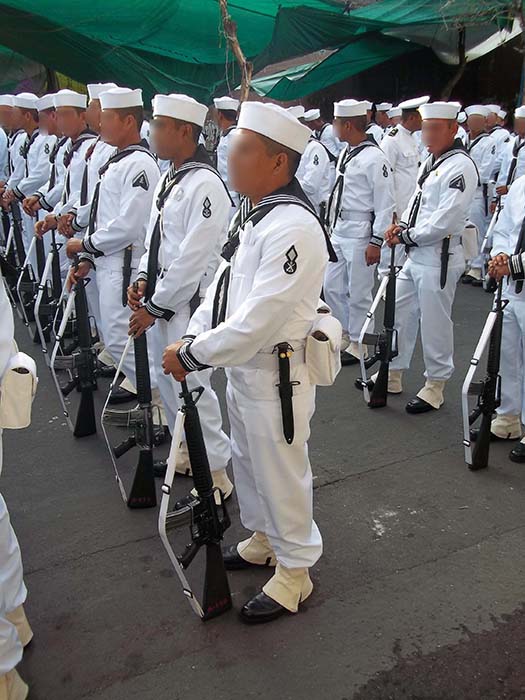
The M2 machine gun is used in ground and naval mounts, being highly effective against any type of target. This weapon is manufactured by General Dynamics and U.S. Ordnance in the U.S. Naval helicopters have been equipped with the FN-Herstal Mag-58, usually in the door gunner position; the FN-Herstal M3M, in the 12.7mm caliber, is also seen with the door gunners, and more recently, the Marines have received Dillon Aero M134D models. In 2011, the government expected to invest $40,232,136 in 216 machine guns to equip its new combat helicopters (UH-60M and EC-725). Much speculation centered on acquisition of additional Gau-19/A MGs, used already on MDH MD-902 models. The GECAL 50 is an electrically driven Gatling gun firing the 12.7x99mm ammo, ideal for installation on helicopters, ground and naval mounts.
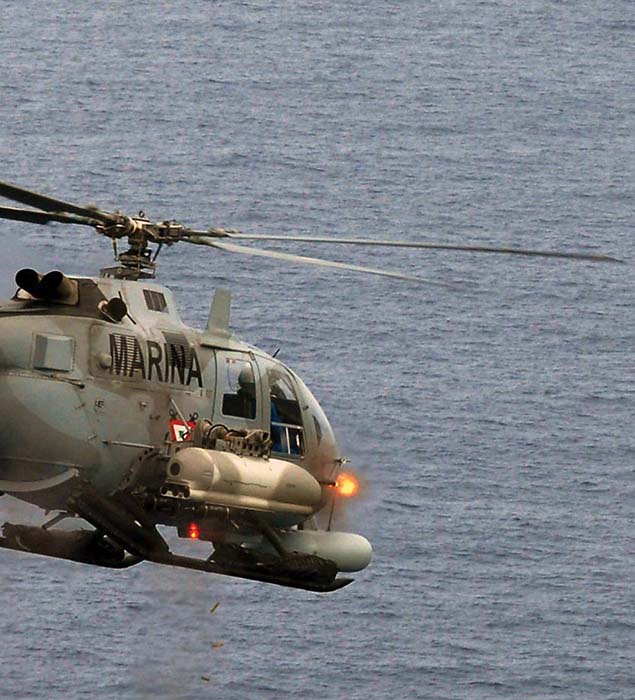
The Spanish CETME Ameli (for ametralladora ligera) is also used on light vehicles and small boats, and more recently a few M60E4 models have been observed in use. Most interesting in the hands of the Mexican sailors are the Oerlikon 20mm in IV-type gun mounts placed on towed platforms for ground/AD use. The gun weighs 522 kg (1,150 lbs.), having a cadence of 450 rpm. The Oerlikon 20mm/70 has a range of some 3,450 yards (3,154 m), with a ceiling range of some 10,000 feet (3,048 m), but manually aimed weapons would reach some 1,000 yards (910 m), and on the Mk IV mount the gun can be depressed to -5 and elevated to +87 degrees. These guns are mounted in many patrol vessels, and several of them were also placed on M561 Gamma Goats. The Navy has received a number of Mk 67 and Mk 68 naval guns as well. The gun is an Mk 16 Mod 4 and Mod 5 in 20mm caliber, secured in a Mk 67 Mod 0 or Mk 68 Mod 0 gun mount. The Mk 67 holds 385-ready rounds and the Mk 68 holds two boxes with 200-ready rounds each. The gun has been rated as difficult to maintain in the U.S. and completely discarded from service. It is not known how it is faring in Mexico, but several have been observed on M561 Gamma Goat, and these are now being mounted on Chevy Rams pickups. The Mark 67 weighs 475 lbs. while the Mark 68 weights 775 lbs. The Mark 67 allows for an arc of -30 and +75 degrees while the Mark 68 allows for -45 to +70 degrees. The ammo type fired by the Mk 16 is the 20 x 110 mm (rimless type), firing M90 Series, HEI and APT up to 2,000 yards (1,830 m). The Mk67/Mk68 system was widely used in Vietnam and the following years until replaced by the 25mm.
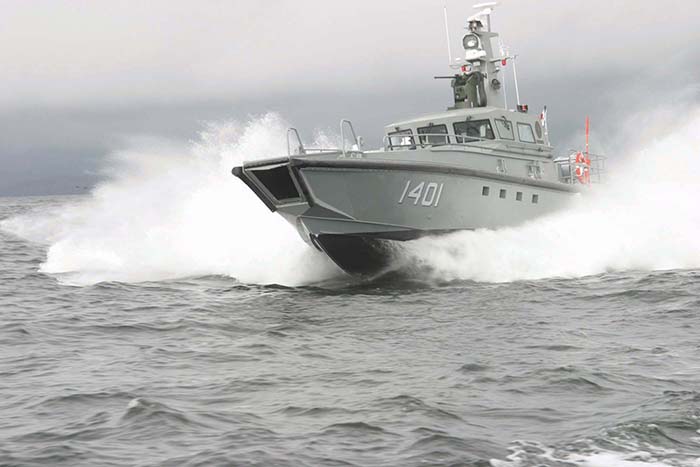
Amphibious Reaction Forces
During Vicente Fox’s administration, the Naval Infantry fielded 11,812 Marines. These were distributed among two Amphibious Reaction Forces (FRA), comprising four Marine Groups. These forces started to reorganize and expand in 54 Marine Brigades. Effectively, between 2000 and 2006, the Mexican Navy reorganized into two Naval Forces, one based at Manzanillo, along the Pacific, and the other one at Tuxpan (Veracruz) along the Gulf and Caribbean. Each Naval Force would dispose of a Fuerza Reacción Anfibia (FRA – Amphibious Rapid Reaction Force) to undertake immediate response operations along the coast. By definition, each FRA would have had a flexible structure, with functional capabilities to undertake tasks that required rapid response, firepower, and mobility in air, sea and land operations. The FRAs accounted for 2,500 Marines, and each FRA counted with Amphibious Riflemen, Artillery and Support, Landing Assault Vehicle, and Services battalions. By the time Fox left office in 2006, the FRAs accounted for 12 Marine Battalions, and there were another 5 Marine Brigades. The arrival of the Calderon Administration signified a new reorganization and new role for the Navy and the arrival of an Enrique Peña Nieto as president in 2006 will mark even a new direction for the Navy and the Marines.


The arrival of Peña Nieto’s administration in 2012 found the 1st Naval Region deploying Marine Battalions in the Districts of Ciudad Madero (Tamaulipas) and Veracruz (2 battalions) and the naval sectors of Coatzacoalcos (Veracruz), Matamoros (Tamaulipas). The 3rd Region deployed troops in Ciudad del Carmen (Campeche), Frontera (Tabasco), Lerma (Campeche), and Champotan (Campeche). The 5th Region deployed Marines from Isla Mujeres, Chetumal, Cozumel (all three locations in Quintana Roo) and Yukalpeten (Yucatan). Along the Pacific, the 2nd deployed Marines from Ensenada and Puerto Cortes; the 4th Region had Marine battalions in Ensenada and La Paz in Baja California, Mazatlan and Topolopambo, (both at Sinaloa), Guaymas and Penasco, in Sonora; the 6th Region deployed Marines in Mazanillo (Coima), San Blas (Nayarit), Puerto Vallarta (Jalisco), and Lazaro Cardenas (Michoacán); the 8th Region controlled Marines operating from Acapulco (Guerrero), Salina Cruz (Oaxaca), Puerto Chiapas (Chiapas – 2 battalions) and Huatulco (Oaxaca). The Marine HQ in Mexico Federal District deployed two additional Intervention Marine Battalions, while the 24th Naval Infantry Battalion remained as part of the Presidential Guard Corps and depending directly from the General Staff Command.
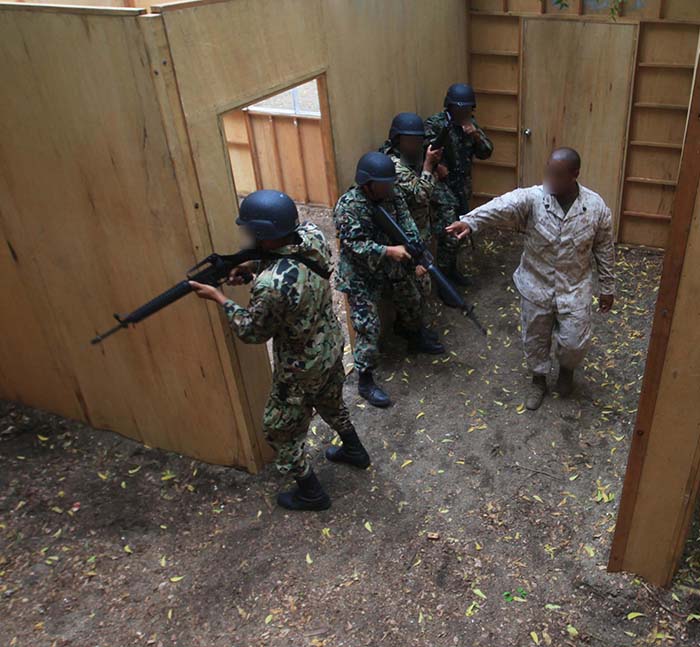
Those Marines battalions (BIM) assigned to the FRA-PA in 2012 included the 2nd, (supported by the 1st Amphibious Assault Vehicle Company), the 4th (supported by the 2nd Amphibious Assault Coy), the 2nd Naval Commando Battalion, and the 2nd Naval Infantry Artillery Battalion. Additional support comes from the 3rd Amphibious Assault Vehicle Company and the Amphibious Reconnaissance Vehicle Company. The Caribbean and Gulf FRA deploys two BIMs (1st and 3rd), a Naval Commando Battalion (1er Batallon de Comandos), a Marine Artillery Battalion, a Landing and Vehicle Battalion, and a Service BIM.
There are four elite Mexican Naval outfits. The Marine Parachute Fusilier Battalion (FUSPAR) deploys 2 companies to support each of the Amphibious Reaction Forces, but remain based at Mexico DF. There are two Special Forces (FES) units comprising 10 Naval Commando Groups (for a total of some 460 operators distributed among FESGO and FESPA). More recently there is mention of the Fuerzas Especiales del Centro, which would indicate an expansion of the Spec Ops forces. While the FES commandos are the Mexican version of the U.S. Navy SEALs, the Amphibious Commandos (Comando Anfibio) refer to their version of U.S. Marine Reconnaissance, although not necessarily in the same level. A Mexican Amphibious Commando is said to attend a separate 8-week course. The ASIES, on the other hand, refers to four elite Strategic Security Installations Naval Group (Agrupamientos para la Seguridad de Instalaciones Estratégicas) in charge of security at Gulf drilling platforms, Laguna Verde, Geothermic and Hydroelectric plants and others.
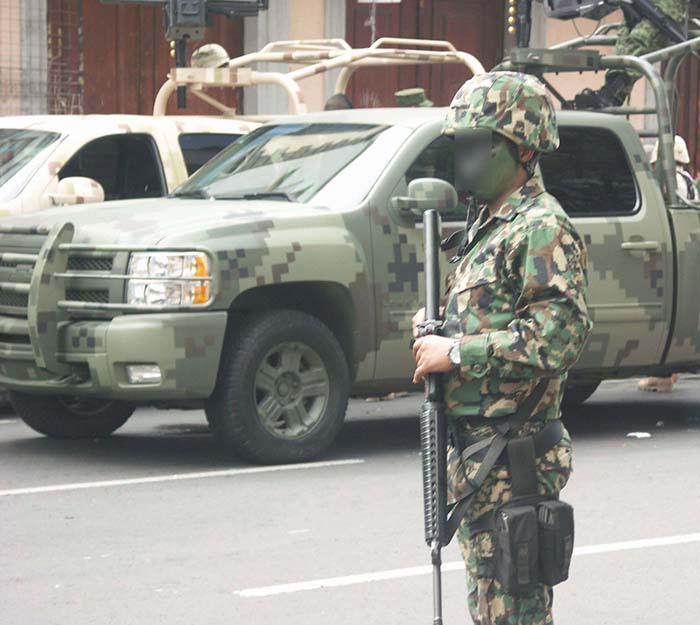
At Speed On Water
It falls on SEMAR to perform littoral warfare and riverine operations in the national waterways. Before leaving office and during Navy Day in mid June 2012, the Navy incorporated two new coastal patrol vessels (ARM Tenochtitlán and ARM Teotihuacán), locally built for 9 million dollars apiece, and five Polaris (CB90) class interceptors (ARM Albireo, ARM Alnitak, ARM Mintaka, ARM Alfirk and ARM Alderamin). In addition to this 5 received in 2012, the Navy had previously received eight CB90 built in Mexico. The Polaris refers to the Mexican built variant of the Swedish designed CBH-90 interceptor, built locally for 2 million dollars apiece.
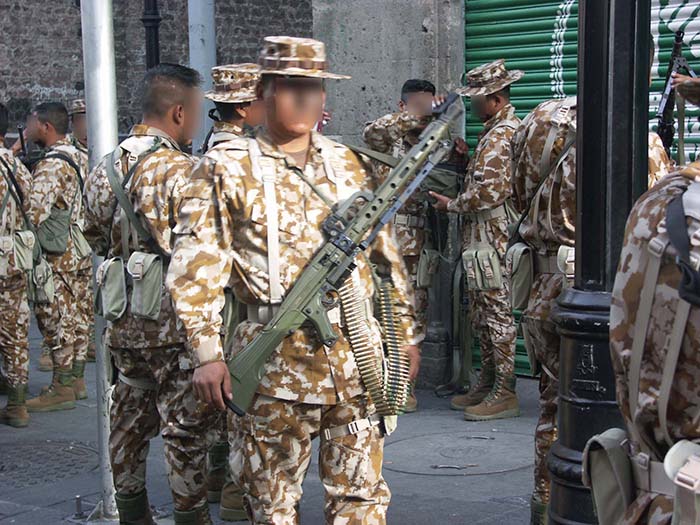
The Combat Boat 90 (CB90) is used in drug interdiction functions. These are fast military assault craft developed and built originally for the Swedish Navy by Dockstavarvet. The boat can operate in shallow draught thanks to its twin water jets. This allows operations at speeds of 40 knots (74 km/h) in shallow coastal waters. Mexico purchased 40 CB90 HMN between 1999 and 2001, and obtained a production license in 2002, building some 10 additional vessels, including modified models, up to June 2012. As the U.S. and Mexican navies developed closer ties, cross training commenced and evolved, to include Marine incorporation of tactics and strategies. Interestingly, in July 2007, the U.S. Navy chose the CB90 for its Navy Expeditionary Combat Command (NECC). The CB90 in U.S. service is denominated Riverine Command Boat (RCB). The U.S. version is a 49-ft. craft equipped with twin Scania DI16 850 hp diesel engines coupled to Rolls Royce FF410 waterjets. In U.S. service, the boat comes with SeaFLIR III IR system and Furuno Navigation, and has provisions for four individual .50 caliber mounts, and space for a stabilized remote control weapons station. In Mexican service, the boats have been observed with only one M2HB at stern on a ring that allows for a 360 degree line of fire; however, a few years back, the Mexican Navy acquired the first batch of 13 OTO Melara remote-controlled Hitrole 12.7mm remote-control turret, with a 400 round magazine. The system comes with a night and day sensor suite, laser range finder and ballistic computation for stand-alone mode. The Mexican Navy has also implemented the Sconta50 Project, which is a remote controlled turret equipped with an automatic fire director equipped with a 12.7mm machine gun. The turret provides for a stabilized platform for firing in vessels travelling up to 50 knots. The Mexican CB-90 variant appears to be the standard model, which is a little bigger than the U.S. model, at 15.9 m (52’) in length. This variant is equipped with Caterpillar CAT 3406E, Transas navigation system, HoseMcCann intercom and Marineair AC. The vessel can carry up to 21 troops. The comparison with the U.S. model can give an idea on how powerfully these boats can be armed and used. The Navy also developed the Acuario and Acuario B designs from the Polaris. Six Acuarios have been built, along with two B models. In 2005, the Navy developed the Interceptor Craft 16M (IC16M), denominated Polaris II, a shortened design similar to the US RCB, and equipped with two MAN 2842LE 410 diesel engines instead of the Caterpillar, and these are matched to two Rolls-Royce FF410 waterjets, allowing for up to 50 knots. Mexico planned for 120 CB90 in both types.
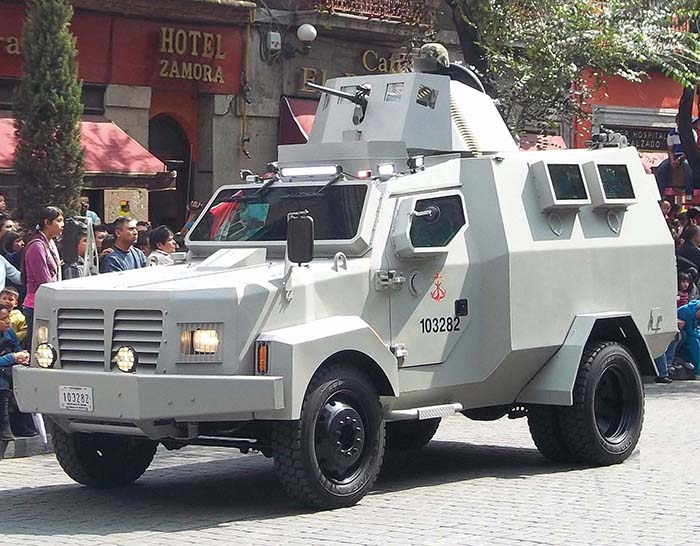
Along with the delivery of these new boats, the Calderon period (2006-2012) saw the delivery of 36 U.S. supplied SAFE Defenders, and 6 MLB, and one of the two logistical vessels being built in local yards. It is noted that the Mexican Navy has adopted a number of systems and tactics common to the U.S. counterpart for use in riverine and coastal warfare. A number of Polar Kraft boats are now used in interior waterways, along with Zodiac Mk-V and Valiant Dr boats. The small unit riverine craft (SURC) has been acquired, although it appears to be in the naval interceptor version instead of the weapons platform used by the U.S. Navy. The SURC has a rigid hull that comes with a high strength solid cell foam collar, which provides stability, redundant buoyancy, and small-arms ballistic protection. As a weapons platform, the boat can be equipped with a number of M2HB, Mk-19 and others, but in Mexican service it comes in the Navy Grey color, instead of camouflage, and it carries a single gun mount.
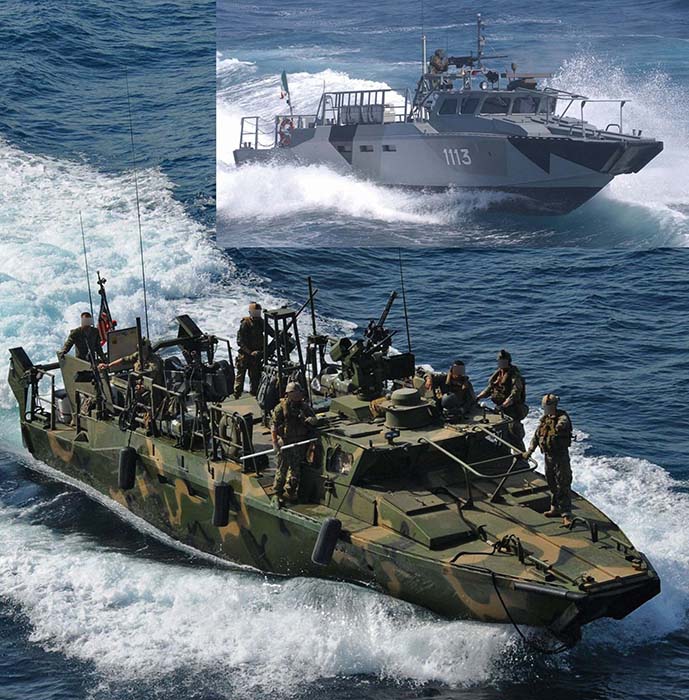
At Speed On Land
The Navy’s motorized fleet has been expanding, receiving a number of Kawasaki Mule 4010 Trans 4×4 ATVs, as well as Dodge RAM 1500 and 1500 ST pickup trucks. These are the workhorses of the urban patrol units. Each RAM can carry up to 10 troops, and both models are built in Mexico, with the first one carrying a V6 Magnum, 3.9 liter, gas engine rated at 125 hp and the second a V6, 3.7 liter, 215 hp model. The bigger Dodge RAM 2500 is also used, and it is also built in Mexico with a V8 Magnum, 5.9 Liter, gas engines rating 230 hp. The Ford F150 and F-250 are also used as troop transports, and are locally built using a V8, 5.4 liter, 300 hp gas engines, and V6, 4.2 Liter, 210 hp models respectively. The Chevrolet Cheyenne is built with a V8 Vortec, 5.3 Liter, and gas engine developing 285 hp or a 315 hp model. Although the pickups are modified with a simple roll-bar and other accessories, ideally, the government should take advantage of the local industry to transform the pickups into dedicated fighting vehicles. Instead of a pedestal mount, a ring would allow for a 360 degree field of fire; a better designed roll-bar could protect the vehicle all around against hits, and also function to attach armored plates, blast protection seats, and additional accessories.
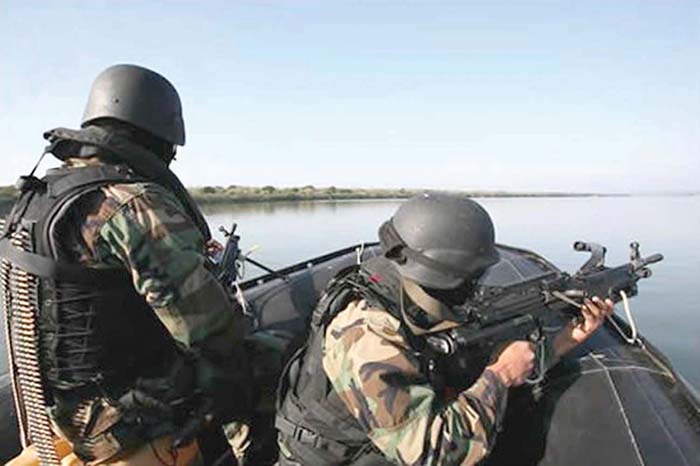
For fast patrol and liaison missions, the Marines depend on the Jeep CJ7, and more recently the Mercedes Benz “G” Wagon. Numbers of Land Rover Defenders have been added to the fleet. In fact, some Land Rovers have been mentioned as armored vehicles, suggesting a protected model with space for 11 troops. The Ninjas refer to the Chenowth DPV Fast Assault Vehicles, with some 6 in use. In mid- 2011 the Navy announced the establishment of armored units equipped with the Carat Security Wolverine APCs, built in Monterrey on Ford F-450 truck chassis. These were denominated Puma B6 APC by the Mexican Naval entity. It uses a V8 diesel engine developing 390 hp, allowing for a maximum speed of 130 km/h. The Puma has already engaged in combat against armored pickup trucks used by the capos. The Navy is said to use the similar Black Scorpion model, made from the same firm, but based on the Toyota model. This material is now complementing the 30, or so, Irtish BTR 60, denominated APC 70. Reports indicate that those models in Mexican service have been modified with diesel engines, but the originals were also modified with a 12 liter, gas engines, developing 210 hp each. It is noted that the Unimog U4000 is now the standard tactical truck with the Marines, so it would be only logical the eventual acquisition of the Unimog U5000/1300 APC. In addition to the mentioned U4000, the medium load tactical truck fleet includes the Ural, locally-built Dina S400, S500, D400, D500, and Freightliner M2 35k models. There are also Chevrolet Kodiak, International 4700, Ural 4320-31, M-35 and Dina 4100.
| This article first appeared in Small Arms Review V17N1 (March 2013) |



